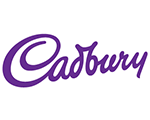Using Open Innovation to Ensure Competitive Advantage
Published Aug-20-10Breakthrough:
Cadbury has successfully used open innovation to complete 60 searches that have led to 15 collaborations that have resulted in new product launches.
Company:
Cadbury, United Kingdom
The Story:
 In 2006 Cadbury embraced open innovation, turning to collaboration with external partners to find solutions and innovations they could bring to market.
In 2006 Cadbury embraced open innovation, turning to collaboration with external partners to find solutions and innovations they could bring to market.Even though they have global sales topping $7 billion, employ more than 45,000 people, and operate in over 60 countries, Cadbury believes that new ideas and the innovative process is bigger than the intellect employed within the company, and have opened their doors to solutions and input from non-competing industry sectors.
A team was set up to drive and support their Open Innovation strategy, with a mandate to deliver commercially beneficial innovations to Cadbury through external innovation networks such as universities, research institutes, and SMEs (small to medium enterprises).
They initiated projects that involved research from university groups, co-development with large corporations, partnering with key suppliers, and licensing existing technologies.
They have successfully harvested solutions and novel ideas in their gum, candy and chocolate divisions, and set up their website to list the technologies they are interested procuring ideas for.
Their "Collaboration Factory" currently requests intriguing innovation needs such as "3D Forming Chocolate," which seeks new methods of forming chocolate, "Thermostatic Food Grade Packaging," that would prevent the contents of the package from heating up beyond temperatures of 20 degrees, and "Microscopic Aeration," which requests a method for producing microscopic aeration in candy to provide new textures and mouthfeel.
As well as partnering with suppliers and universities, Cadbury has explored working with knowledge brokers that have access to thousands of problem solvers who are eager to respond to challenges, and will compete for the chance to have their ideas awarded and developed.
As of May 2009, Cadbury's collaborations have resulted in 60 completed searches that have led to 15 collaborations, gleaning ideas and technologies from non-food sectors, and product development with a target launch date of October 2010.
Their successful collaborations have included:
- A University collaboration resulted in using the anti-caries properties of milk in their Xtra Care Trident gum.
- Technologies from metallurgy and defense sectors have led to feasibility testing for applications in confectionery.
- A research project has been entered into with King's College, London, to develop and validate the characterization of the physico-chemical attributes of chocolate.
- Applying the polymer science used in pressure profiling and electronics to confectionery production.
Adapting to the new realities of the marketplace, Cadbury has ensured its competitive advantage by accelerating the innovative process through open innovation.
Next Story »
